One of my daily chores is gathering and processing the eggs into cartons, and I generally enjoy it. I will admit, since the weather has been so bitterly cold this winter, it isn’t quite the delightful treasure hunt that it was in the summer, but I never fail to appreciate the lovely eggs our girls provide to us.
Our hens have 24 nest boxes in which to lay, and while most of them stick to those, some prefer the little corner in between the two banks of boxes. Since the weather has gotten particularly colder, they’ve taken to burying the eggs underneath the pine shavings. Smart girls, those eggs are insulated! 🙂
When hens lay an egg, they apply a protective coating known as the “bloom” or “cuticle.” This is a barrier to keep bacteria and air out, and moisture inside. In commercial egg operations, they eggs are sanitized, removing the bloom. Some of those industrial producers apply mineral oil after removing the bloom. We like to keep the bloom intact on our eggs as much as is possible. Sometimes there is debris, including wood shavings, feathers, etc. that we need to wipe off with water. Sometimes another hen coming into the nest has a dirty foot, and tracks that across the eggs in the nest, which we will use a bit of warm, mildly soapy water to remove the smudge. If an egg is seriously soiled and can’t be reasonably cleaned, we throw it out. It is interesting to note that in France, they do not wash their eggs for sale, even in the stores. If an egg must be washed, by law, it cannot be sold whole, and must instead be processed into pasteurized products, like Egg Beaters.
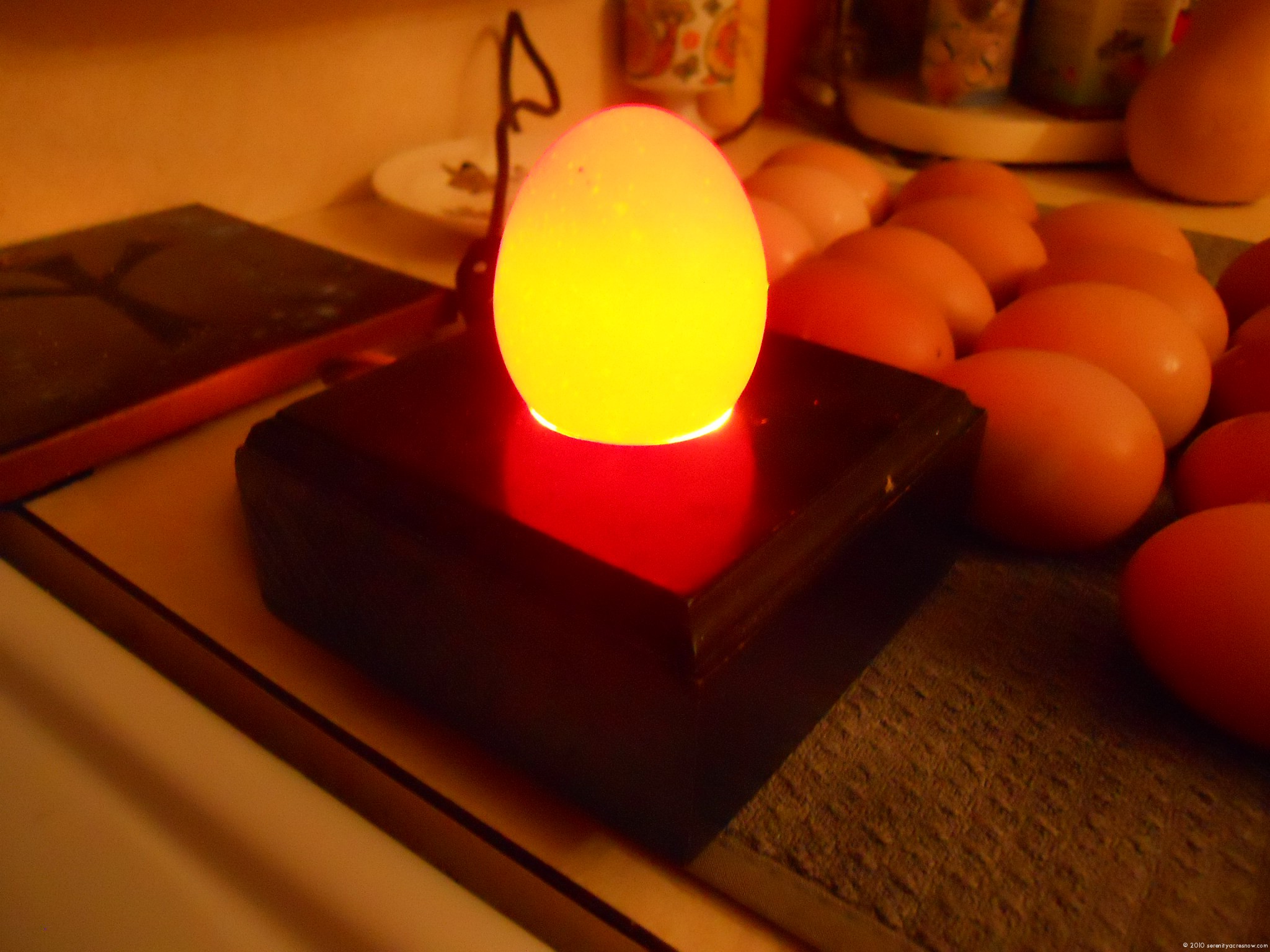 If an egg is cracked, but the inner membrane remains intact, we crack it into a sealed container, and keep it in the fridge, using it within 48 hours. You’d probably laugh at our personal egg carton, it contains all of the “irregulars!” (Tiny Bantam eggs, elongated eggs, etc.) Sometimes a crack is obvious, while others aren’t apparent until I candle the eggs. Which leads us to my favorite part of processing the eggs. 🙂 Doesn’t an egg look pretty all illuminated? It seems like everyone who witnesses it is as fascinated with the process as I am.
If an egg is cracked, but the inner membrane remains intact, we crack it into a sealed container, and keep it in the fridge, using it within 48 hours. You’d probably laugh at our personal egg carton, it contains all of the “irregulars!” (Tiny Bantam eggs, elongated eggs, etc.) Sometimes a crack is obvious, while others aren’t apparent until I candle the eggs. Which leads us to my favorite part of processing the eggs. 🙂 Doesn’t an egg look pretty all illuminated? It seems like everyone who witnesses it is as fascinated with the process as I am.
We candle the eggs to insure the integrity of the shell, and also, in an attempt to determine if there is anything wrong inside of the egg. Problems could include blood or “meat” (tissue) spots, which can occur when the hen makes an error during laying; perhaps she was startled and accidentally included something in the egg she shouldn’t have. Candling is a method of determining whether eggs are fertile, too, and it is an important part of hatching out chicks from eggs; you must candle the eggs at least a couple of times during the incubation process to make sure someone is inside the shell, and you aren’t just cooking up a rotten egg! But chick development isn’t even a concern as it pertains to the eggs we have for sale, because we gather our eggs throughout the day. Therefore, none of our hens has the opportunity to get really broody and lay on their eggs long enough to start incubating them. As you can see from the teaching tool that is used in some classrooms to demonstrate the development of a chicken embryo, it takes five days before something really resembling a chick starts forming. Our girls don’t even have but a few hours to initiate that process, so no worries about baby chickens in our eggs. Even if there was some freak event, I’d catch it during candling before any babies made it into the carton. 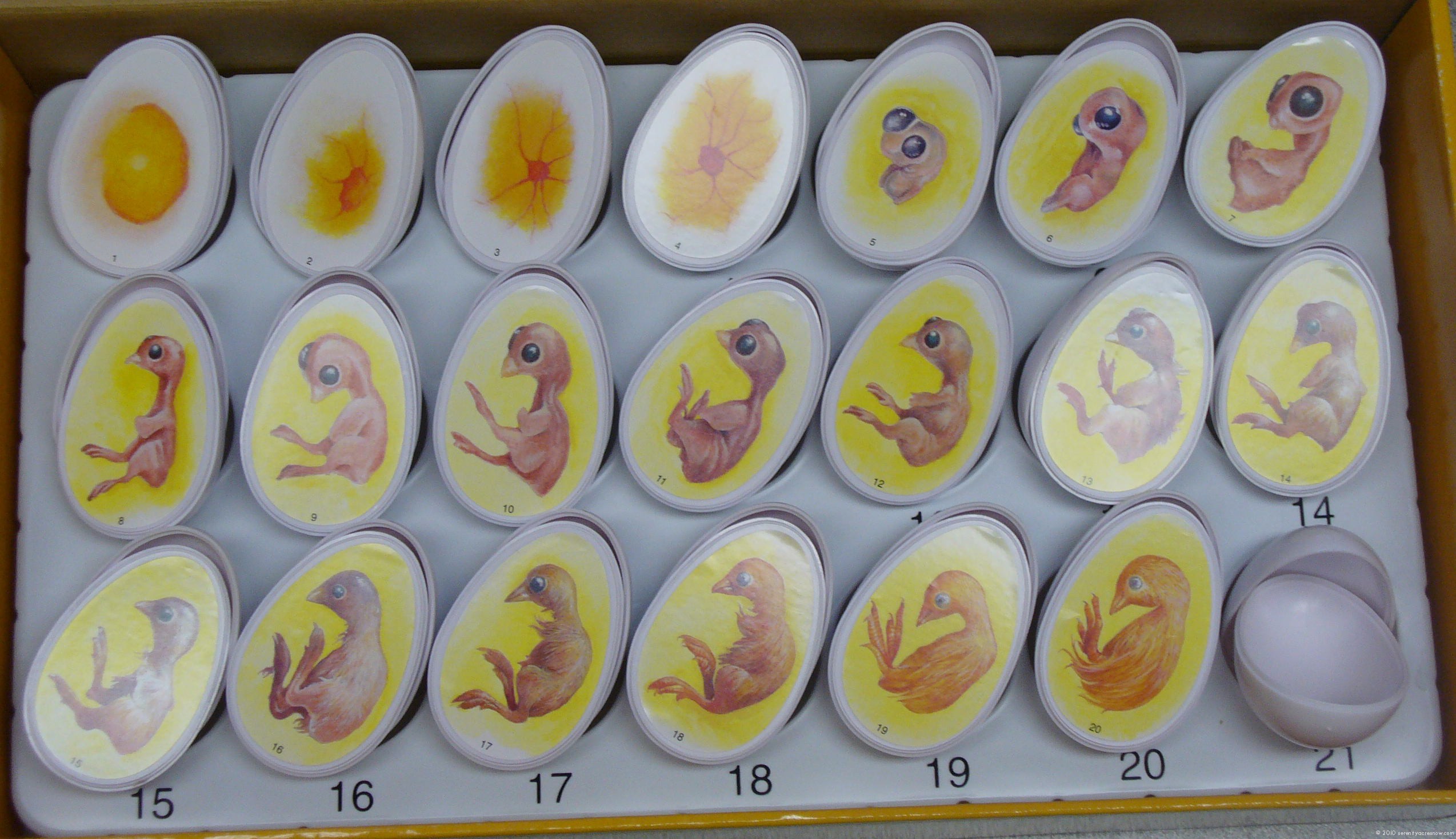
We keep the eggs in their cartons in a separate refrigerator maintained at 37-40 degrees Fahrenheit, and once eggs are cold, they should be kept that way for food safety, according to everything we’ve read.
Our Khaki Campbell ducklings will be arriving at the end of next month, and we are really looking forward to receiving eggs from them this summer. They will have their own separate living area from the chickens, so between the chicken coops and the duck dwelling, I will be quite occupied with egg gathering in a few months!
EDIT: The nifty chicken egg development tool that is pictured to the right is something we receive emails about every few months, and it’s finally occurred to me that I should probably update the post with a link to where you can purchase it! I’m sorry for not doing this sooner. It can be purchased here: Learning Resources Chick Life Cycle Exploration Set.
We hope you enjoy this blog and the antics of our farm. Please check out our fan page on Facebook and “like” it for special updates there, and if you use Twitter, by all means, please add us so we can tweet with you!


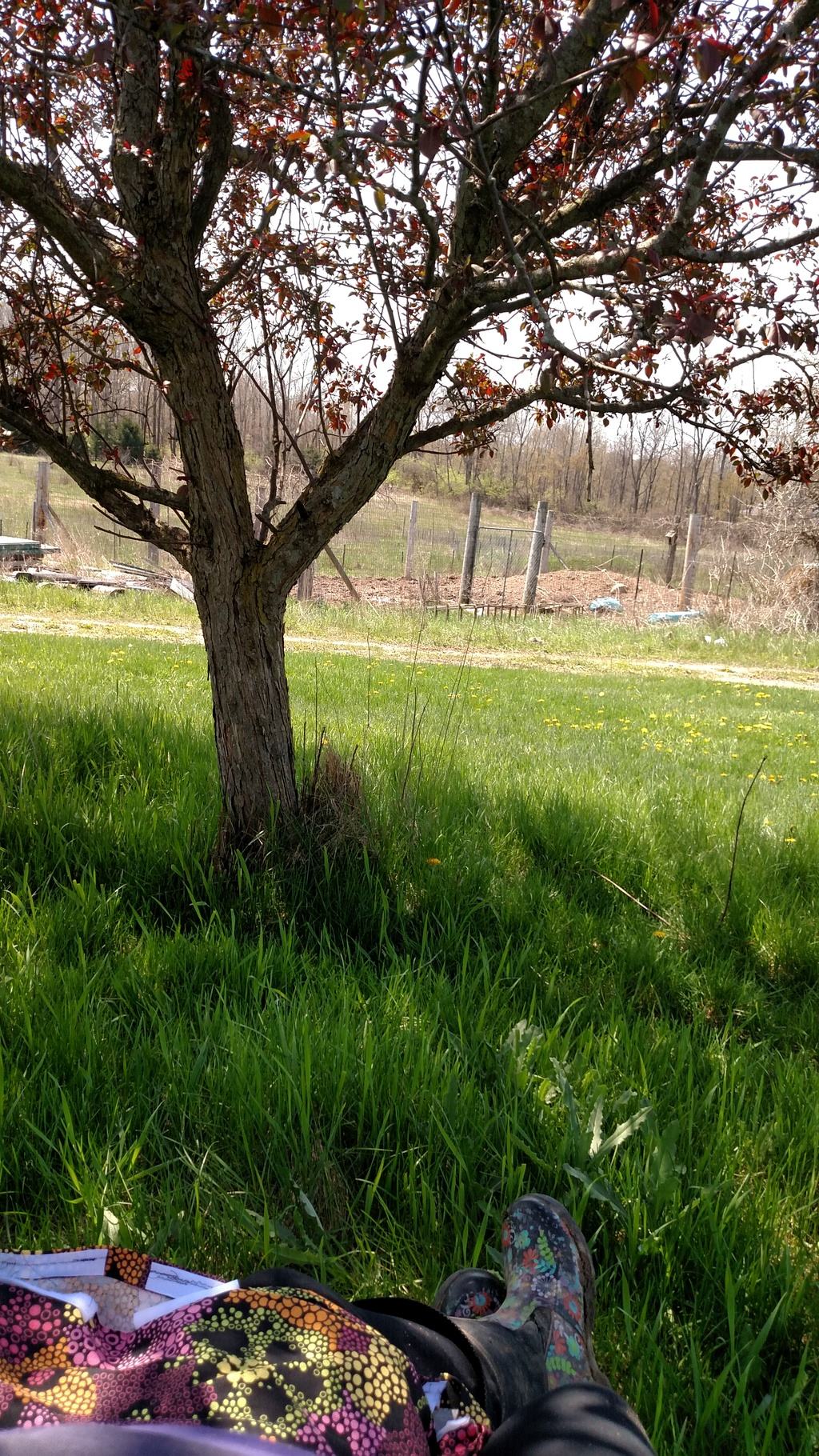
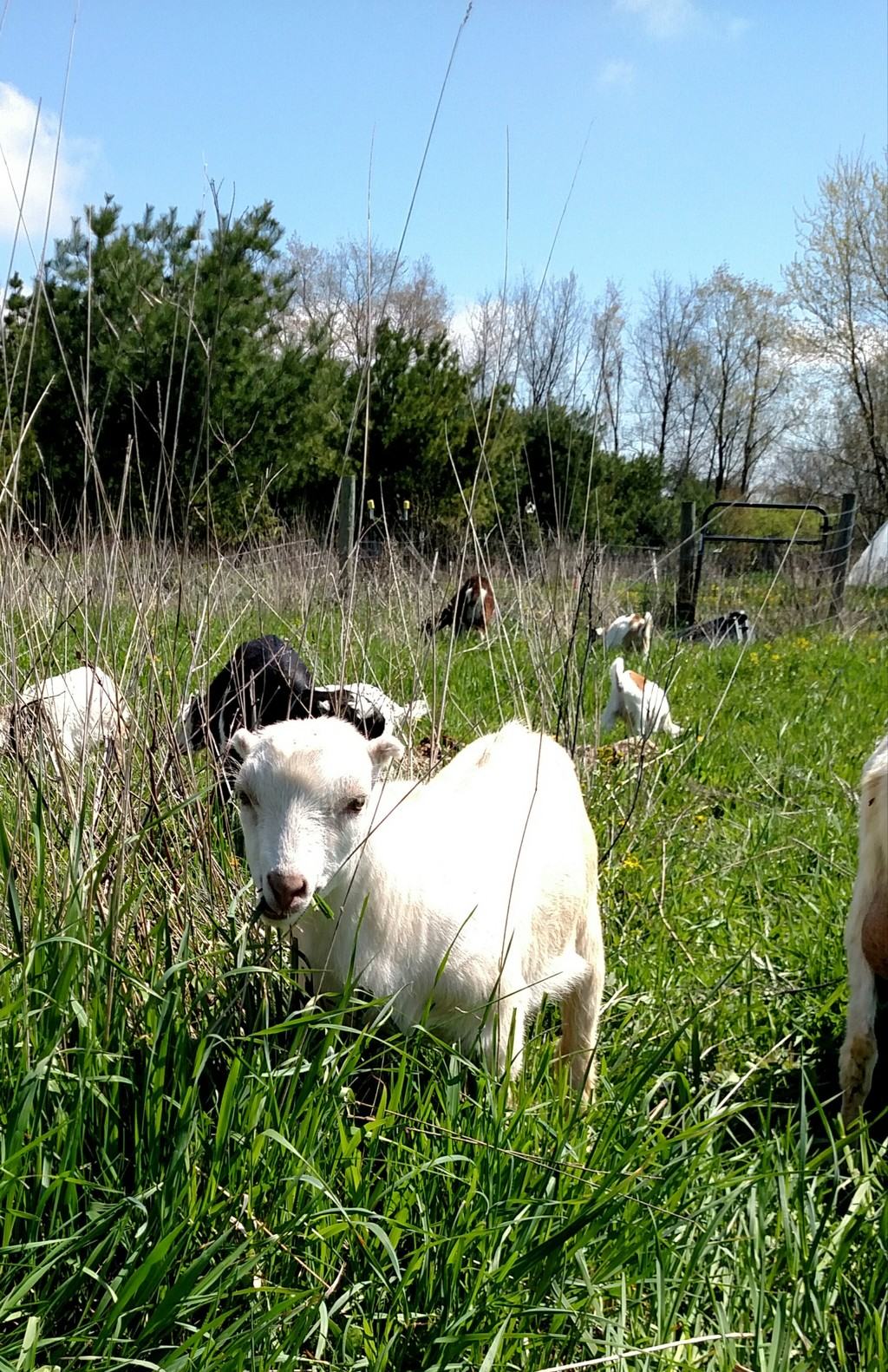
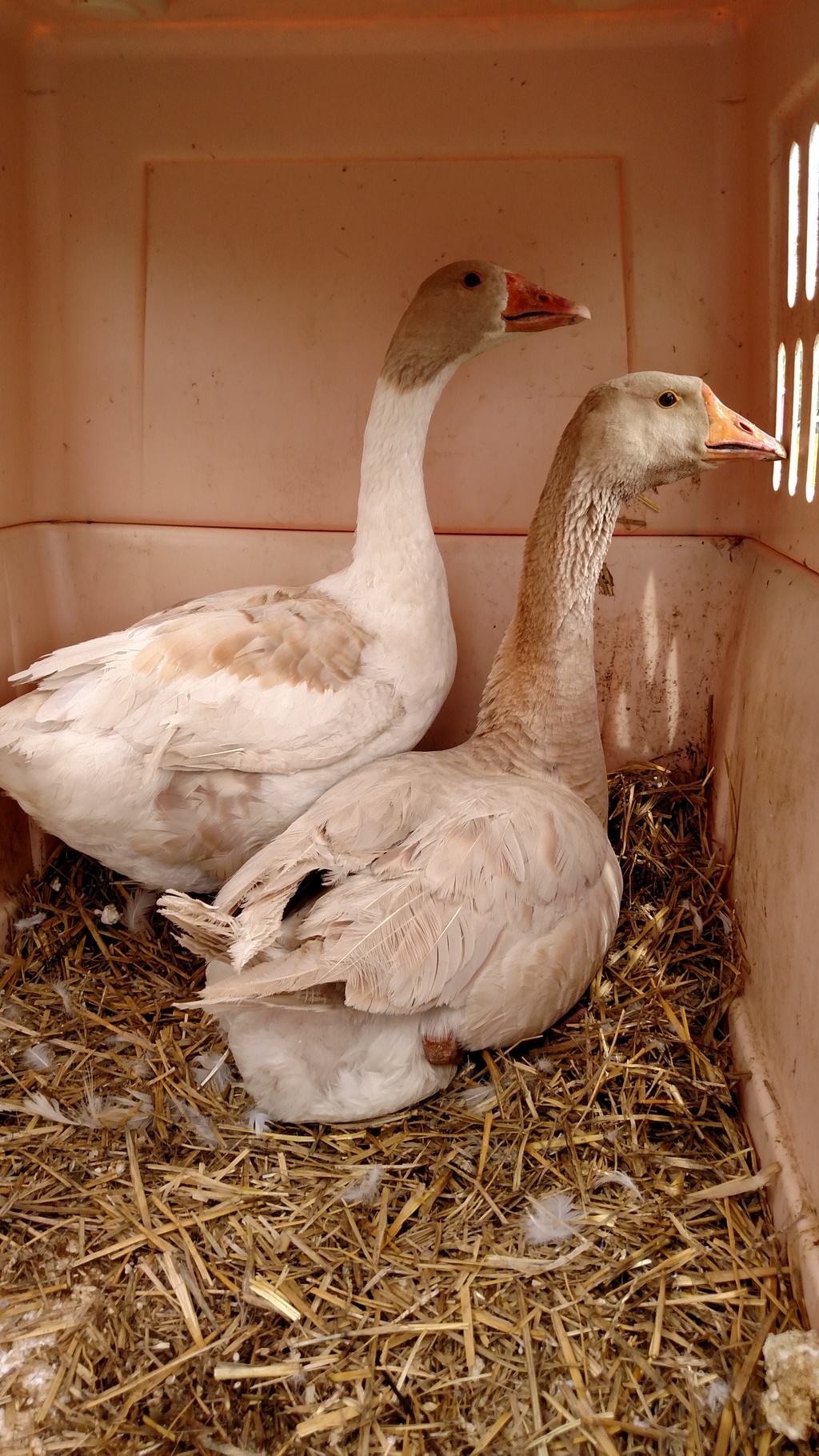
Leave a Reply